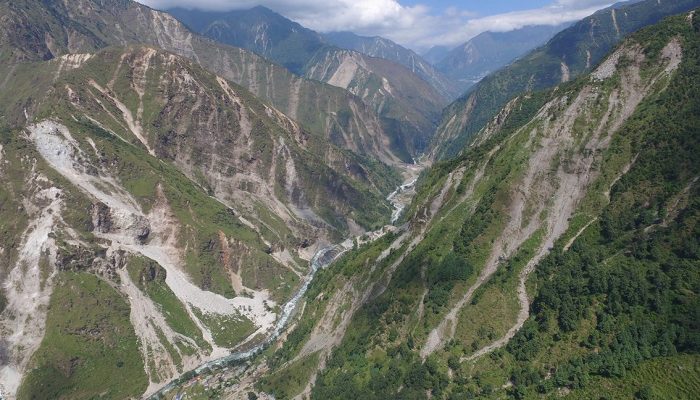
Jane Qiu, a grantee of the Pulitzer Center on Crisis Reporting, took to quake-stricken Nepal last month — venturing into landslide-riddled terrains and shadowing scientists studying what makes slopes more susceptible to failure after an earthquake. The journey proved to be more perilous than she had expected.
What would it be like to lose all your family overnight? And how would you cope? It’s with these questions in mind that I trekked with a heavy heart along the Langtang Valley, a popular touristic destination in northern Nepal.
Exactly a year ago this week, this remote Himalayan watershed witnessed the single most horrific canastrophy of the Gorkha Earthquake: a massive avalanche engulfed Langtang and nearby villages, leaving nearly 400 people killed or missing.
The quake shook up ice and snow at five locations along a 3-kilometre ridge between 6,800-7,200 metres above sea level. They went into motion and swept huge amounts of loose debris and fractured rocks along their way — before crashing several kilometres down to the valley floor.
The avalanche generated 15 million tonnes of ice and rock, and sent powerful wind blasting down the valley, flattening houses and forests. Wind speeds exceeded 322 kilometres per hour and the impact released half as much energy as the Hiroshima nuclear bomb. Nothing in its path could have survived.

A pile of commemorating stones on the debris that buried Langtang and nearby villages last April, killing and leaving missing nearly 400 people. (Credit: Jane Qiu)
Where the villages used to stand is now a gigantic pile of debris, up to 60 metres deep. It’s effectively a mass grave where people pile up stones and put up prayer flags to mark where their loved ones used to live.
It’s hard to come to terms with the scale of the devastation. Everybody in the valley has lost somebody to the monstrous landslide. About two dozen children from 16 families, who were in schools in Kathmandu during the earthquake, lost all their family in the matter of a few minutes.
It’s a sombre reminder of how dangerous it can be in the Himalayas — where people live so close to ice and where population growth and the search for livelihood often push them to build in hazardous areas.
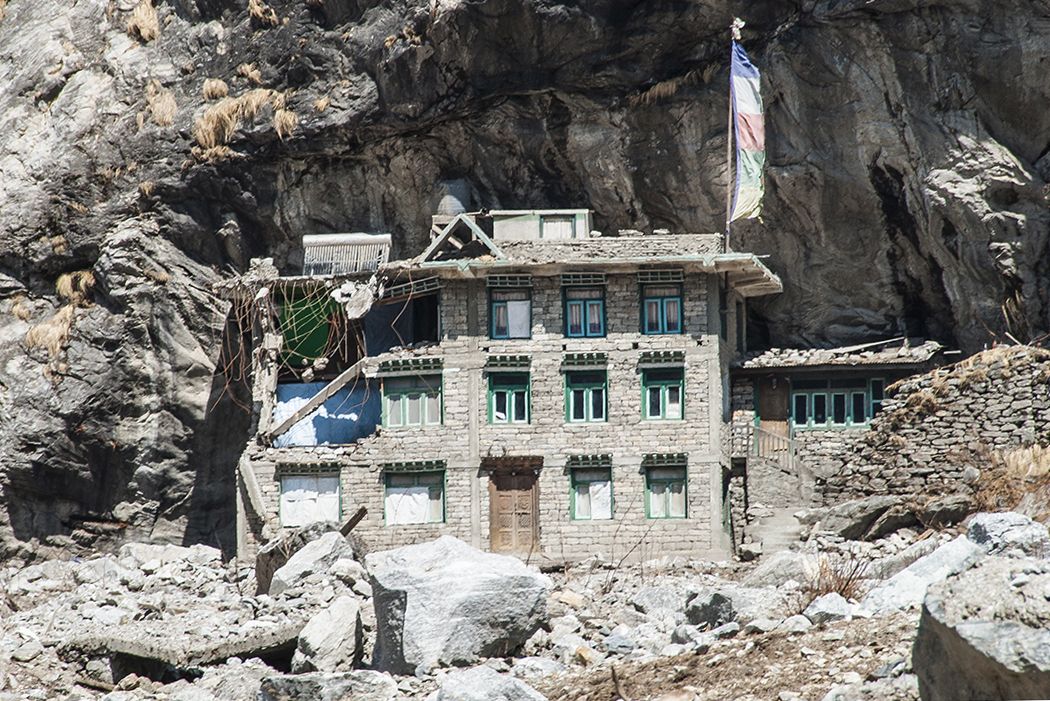
The only building in the village of Langtang that survived the avalanche. The rocky enclave protected it from the crushing debris and the powerful blast. (Credit: Jane Qiu)
Under-appreciated danger
The Langtang tragedy also reminds us how deadly landslides can be during an earthquake — a danger that is often under-appreciated. While earthquakes and landslides are like conjoined twins that go hand in hand, most of the resources go into building houses that can sustain strong shaking, and far too little into mitigating landslide risks.
In both the 2005 magnitude-7.6 Kashmir Earthquake in Pakistan and the 2008 magnitude-7.8 Wenchuan Earthquake in China — which killed approximately 26,000 and 90,000 people, respectively — a third of the fatalities were caused by landslides. While it’s certainly important to build earthquake-proof houses, it’s equally important to build them at safe locations.
In addition to the killer avalanche in Langtang, the Gorkha Earthquake unleashed over 10,000 landslides across Nepal, which blocked rivers and damaged houses, roads, and hydropower stations. Many valleys are totally shattered — with landslide scars running down from the ridge top like gigantic waterfalls, and numerous small failures marring the landscape like fireworks shooting across the sky.
Driving along the Aniko Highway that connects Nepal with Tibet, it’s not difficult to see that many houses had survived the shaking only to be crushed by debris flows and rock falls. The border remains closed because of continuing landslide hazards. The highway, which used to have some of the worst traffic jams in Nepal, is totally deserted.
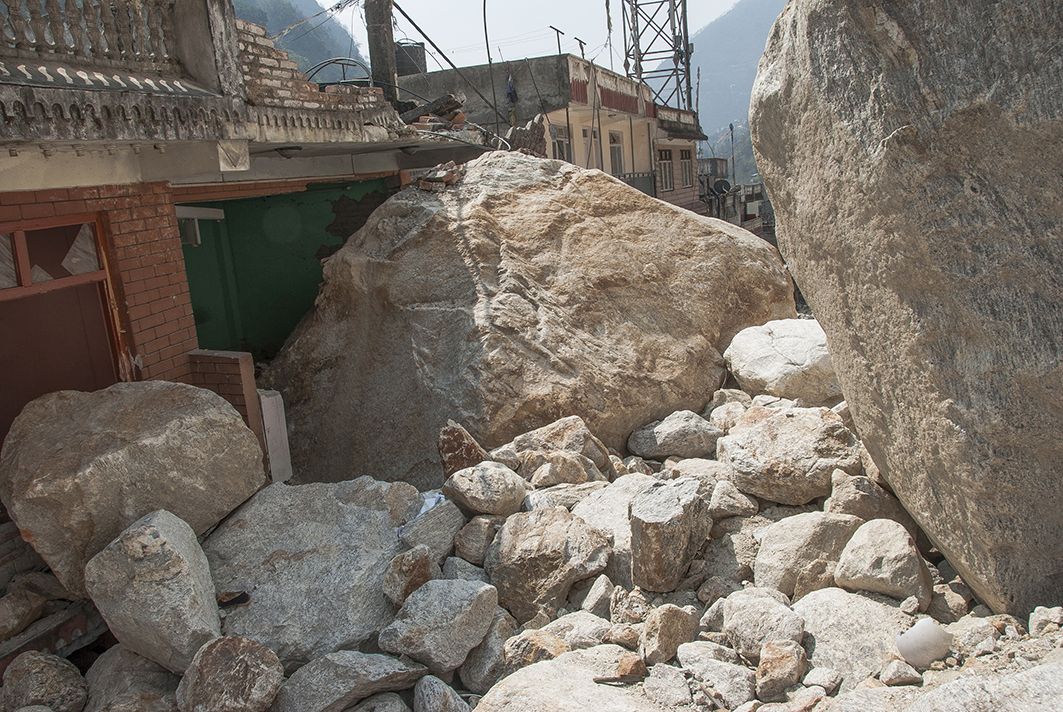
A building in Kodari — which used to be a bustling trade town at the Nepal-Tibet border — was unscathed during the earthquake only to be damaged by large rock falls. (Credit: Jane Qiu)
Enduring legacy
A major concern is that Nepal will suffer from more severe landslides than usual for a long time. During the last monsoon, the landslide rate was about ten times greater than an average year. And my trek along the Langtang Valley was accompanied by frequent sound tracks of falling rocks and shifting slopes. A number of times, I had to run from boulders crushing down onto the trail — a clear sign that there are lots of instability in the system.
The instability could go on for years or even decades and will be exacerbated by rainfall and aftershocks. This enduring legacy is often not fully taken on board in quake recovery — with devastating consequences. Eight years after the Wenchuan Earthquake, for instance, settlements built after the disaster continue to be inflicted by a heightened level of landslides, which cause floods and destroy infrastructures.
This points to the importance of rigorous risk assessment before reconstruction and close monitoring afterwards. There is also an urgent need to better understand what makes mountainsides more susceptible to landslides after an earthquake and how they recover over time.
To achieve that end, several research groups went into landslide-ridden areas in Gorkha’s immediate aftermath. They wanted to capture what happened to the landscape immediately after the quake, so they could track the changes in the coming years.
Early warning
Last month, I joined one such team — consisting of Christoff Andermann, Kristen Cook and Camilla Brunello, of the German Research Centre for Geosciences (GFZ) in Potsdam, Germany, and their Nepalese coordinator Bhairab Sitaula — on a field trip along the Arniko Highway.
That was their fourth trip in Nepal since last June when they began to map the landslides and installed a dozen broadband seismometers, along with weather stations and river-flow sensors, over 50 square kilometres of badly shaken terrains.
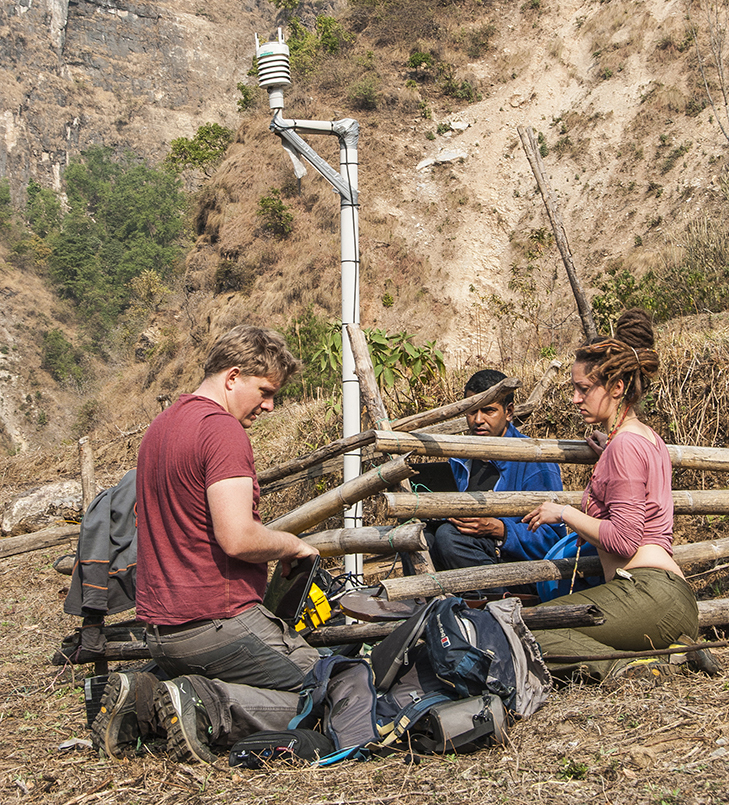
Christoff Andermann, Camilla Brunello and Bhairab Sitaula performing maintenance on a broadband seismometer and weather station near the village of Chaku on the Arniko Highway (Credit: Jane Qiu)
Another exciting aspect of their research is the use of seismology to probe geomorphic processes over a large area. Landslides are effectively earthquakes that occur near the surface, and produce signals that can be picked up by seismometers.
The team, led by Niels Hovius of GFZ, can detect precursory seismic signals days before a landslide happens. They also study ground properties by measuring how traffic vibrations travel through the ground.
Because seismic waves travel faster when subsurface materials are wet, the researchers are able to trace how rainfall penetrates into and through the ground. This determines the pressure of water in spaces between soil and rock particles, a key factor controlling slope stability.
Such studies will one day allow researchers to determine the rainfall thresholds that could precipitate a landslide and capture deformation precursors days in advance. This offers a real prospect of an effective early warning system, which is urgently needed in a country that is increasingly plagued by landslides.
By Jane Qiu, freelance science writer in Beijing
Further reading
Qiu, J. Listening for landslides, Nature 532, 428-431 (2016).
Jane Qiu, an awardee of the 2012 EGU Science Journalism Fellowship, is a Chinese freelance science writer in Beijing. She is passionate about the origin and evolution of the Tibetan Plateau and surrounding mountain ranges—a vast elevated land also known as the Third Pole because it boasts the largest stock of ice outside the Arctic and the Antarctic.
Travelling extensively across the Third Pole, up to 6,700 meters above sea level (http://science.sciencemag.org/content/351/6272/436), Qiu has covered wide-ranging topics—from the meltdown of Himalayan glaciers, grassland degradation, the origin of woolly rhino, to the people of Tibet. Her work regularly appears in publications such as Nature, Science, The Economist, Scientific American, and SciDev.Net.
Qiu’s journey to the Third Pole began with Marine Biological Laboratory’s Logan Science Journalism Fellowship that allowed her to travel to the Arctic and the Antarctic and report climate change first hand. These experiences sowed the seeds for her later fascination with geoscience and environmental studies, and afforded her the insight to draw parallels between these geographically diverse regions.

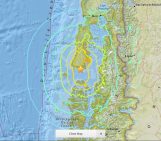
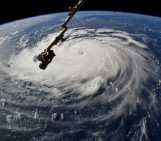
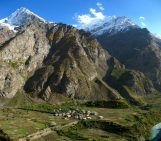
Pingback: GeoLog | How extreme events impact Earth’s surface: reports from the 6th EGU Galileo conference - GeoLog
Pingback: What If Our Mountains Collapsed? – What If